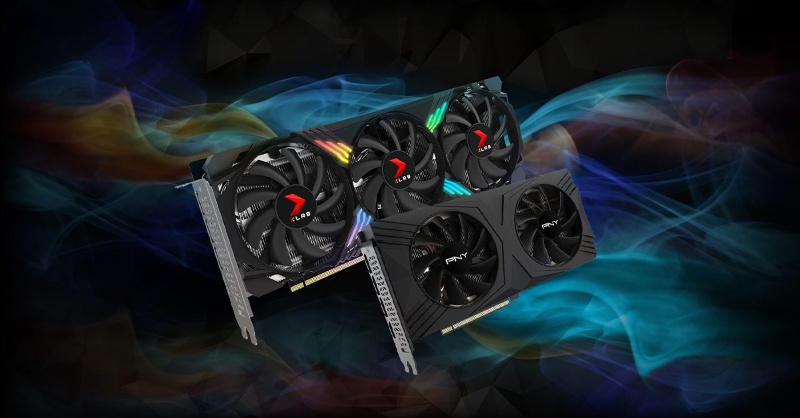1. Introduction: The Power and Choice of the 40 Series
NVIDIA’s RTX 40 series, built upon the revolutionary Ada Lovelace architecture, represents a monumental leap in graphics technology. With significant improvements in performance, power efficiency, and features like DLSS 3, these GPUs have redefined what’s possible in gaming, content creation, and AI development. However, with great power comes a critical question: with several compelling options on the market, how do you choose the best 4000 series gpu for your specific projects and budget? This guide will systematically break down the key contenders, from the value-conscious options to the absolute performance king, to help you identify the best value 40 series gpu for your needs. Furthermore, we will explore a crucial threshold for AI professionals: when the limitations of even the most powerful consumer GPU make a cloud-based solution like WhaleFlux not just an alternative, but a necessity.
2. Contender Breakdown: From Mainstream to Monarch
A. The Value Powerhouse: RTX 4070 / 4070 Super
For the majority of users seeking exceptional 1440p gaming performance and efficient content creation capabilities, the RTX 4070 and its Super variant stand out as arguably the best value 40 series gpu. They deliver a remarkable performance-per-dollar ratio, offering smooth frame rates in modern titles with ray tracing enabled, thanks to the Ada architecture’s efficiency. For professionals working in video editing, 3D modeling, and AI experimentation, the ample VRAM and capable CUDA core count provide a solid foundation without the premium price tag of higher-end models. Their relatively low power consumption also means quieter operation and lower electricity costs, making them a smart, balanced choice for powerful yet practical builds.
B. The Enthusiast’s Choice: RTX 4080 / 4080 Super
Sitting firmly in the enthusiast segment, the RTX 4080 and 4080 Super are designed for users who demand robust, high-fidelity 4K gaming performance and greater computational headroom. This card targets gamers who refuse to compromise on visual settings and professionals—such as animators and data scientists—who benefit from its increased VRAM and faster memory bandwidth. While it comes at a significantly higher price point than the 4070 series, it delivers a tangible performance uplift that justifies the cost for those who need it. It is a high-end, but not the ultimate, option, perfectly suited for users whose workflows are consistently constrained by the capabilities of mainstream GPUs.
C. The Undisputed King: Is the RTX 4090 the Best 40 Series GPU?
When it comes to raw, unadulterated power, the RTX 4090 stands alone. It is unquestionably the best 40 series gpu for those who need the absolute maximum performance available in a single consumer card. Its capabilities are staggering: seamless 4K gaming at ultra settings, feasibility for 8K experimentation, and dramatically reduced rendering times for complex visual effects. For AI developers, the RTX 4090 has become a popular workstation cornerstone, offering exceptional performance for training moderately sized models and fine-tuning large language models (LLMs) locally. Its 24 GB of VRAM provides the breathing room necessary for many demanding AI tasks that would overwhelm lesser cards.
3. The AI Developer’s Dilemma: Limits of a Single GPU
The RTX 4090’s prowess makes it a go-to choice for AI workstations, but it represents a ceiling, not a limitless horizon. For professional AI development, several critical scalability challenges quickly emerge:
- Hardware Limitations: Even the 4090’s 24 GB of VRAM is finite. Training state-of-the-art LLMs or working with large datasets often requires significantly more memory, effectively placing a hard cap on the size and complexity of models that can be run efficiently on a single machine.
- Management Overhead: Manually scaling by building a multi-GPU workstation with two or more 4090s introduces immense complexity. Engineers spend valuable time on infrastructure issues like load balancing, cooling, and networking between GPUs, rather than on developing and refining models.
- Cost of Ownership: The high upfront investment for a multi-GPU rig, coupled with substantial electricity costs and the rapid depreciation of hardware, makes owning and maintaining such a setup financially burdensome for many teams.
4. Beyond the Workstation: Scaling AI with WhaleFlux
For teams pushing beyond the limits of a single workstation or managing multiple concurrent projects, the primary constraint shifts. It is no longer about the power of a single GPU, but about how you access, manage, and scale that power efficiently. This is the point where a dedicated GPU resource management platform like WhaleFlux becomes essential.
WhaleFlux is an intelligent GPU resource management tool specifically designed for AI enterprises. It addresses the core inefficiencies of in-house hardware by optimizing multi-GPU cluster utilization. Its core value proposition is straightforward: it helps businesses significantly lower cloud computing costs while simultaneously accelerating the deployment speed and stability of large language models. By treating GPU resources as a flexible, managed pool, WhaleFlux eliminates the bottlenecks associated with physical hardware.
5. Why WhaleFlux Complements Your 40 Series Strategy
WhaleFlux is not merely a replacement for local GPUs; it’s a strategic complement that enables true scalability.
- Unmatched Scale and Flexibility: While the RTX 4090 is incredibly powerful for a consumer card, WhaleFlux provides seamless access to specialized data-center-grade GPUs like the NVIDIA H100, H200, and A100. These processors are engineered from the ground up for large-scale AI training, offering features and performance that consumer cards cannot match. Even if your workflow is optimized for the 4090, WhaleFlux can provide managed clusters of multiple RTX 4090s, saving you the significant hassle of building and maintaining the hardware yourself.
- Optimized for Production, Not Just Experimentation: WhaleFlux’s business model is tailored for sustained AI development. Our rental models, with a minimum one-month commitment, are designed for production environments and ongoing research, providing predictable pricing and resource stability that is often more cost-effective than unpredictable, on-demand cloud services. Most importantly, WhaleFlux operates as a fully managed service. This means your AI team can dedicate 100% of its focus to model development and innovation, while we handle all the complexities of cluster management, maintenance, and optimization.
Conclusion: Matching the Tool to the Task
In summary, selecting the best 40 series gpu is a matter of aligning performance with your specific use case and budget. The RTX 4090 rightly claims the crown for raw power in a consumer package, excelling in high-end gaming and serving as a capable engine for local AI development. However, for professional AI teams, the ability to scale efficiently beyond a single GPU is the most critical challenge for achieving meaningful results in a competitive landscape.
For scalable, cost-effective, and production-ready AI work, a managed platform like WhaleFlux is the logical and powerful evolution from a local workstation. It transforms GPU access from a capital-intensive hardware problem into a flexible, efficient operational expense.
Ready to scale your AI projects beyond a single GPU? Discover how WhaleFlux’s managed H100, A100, and RTX 4090 clusters can power your innovation.

